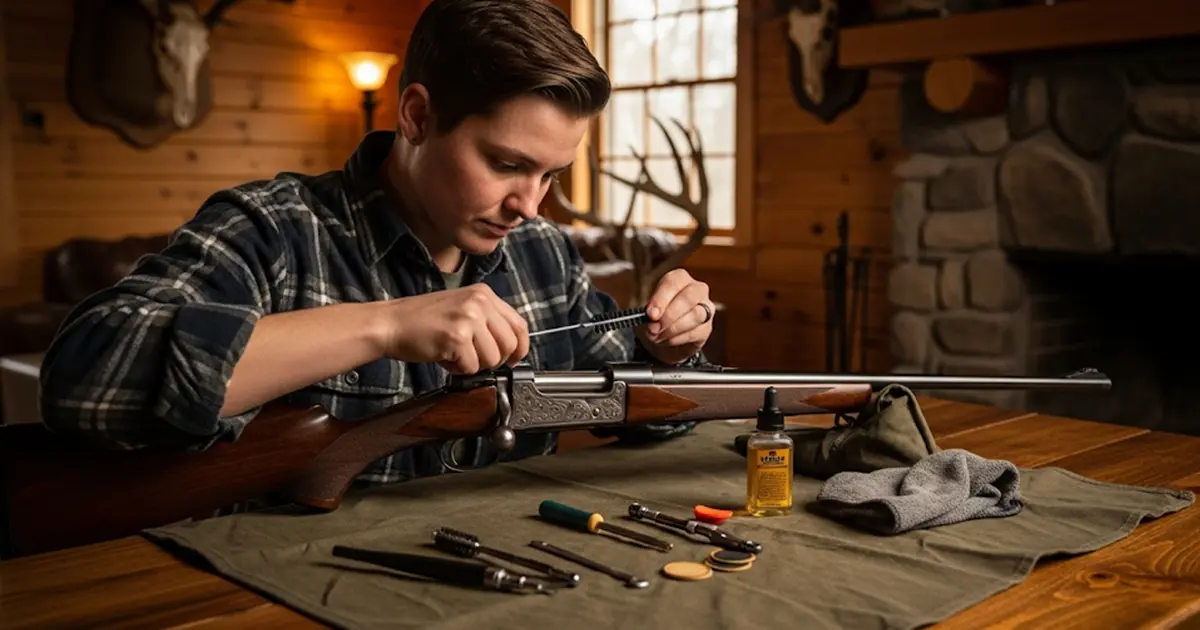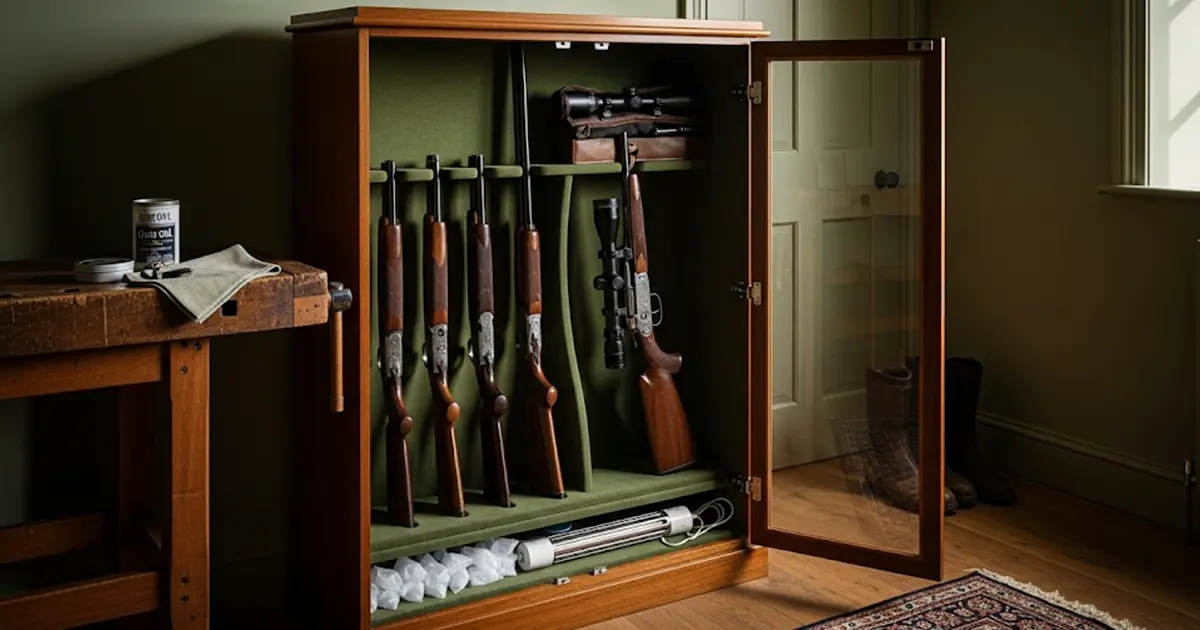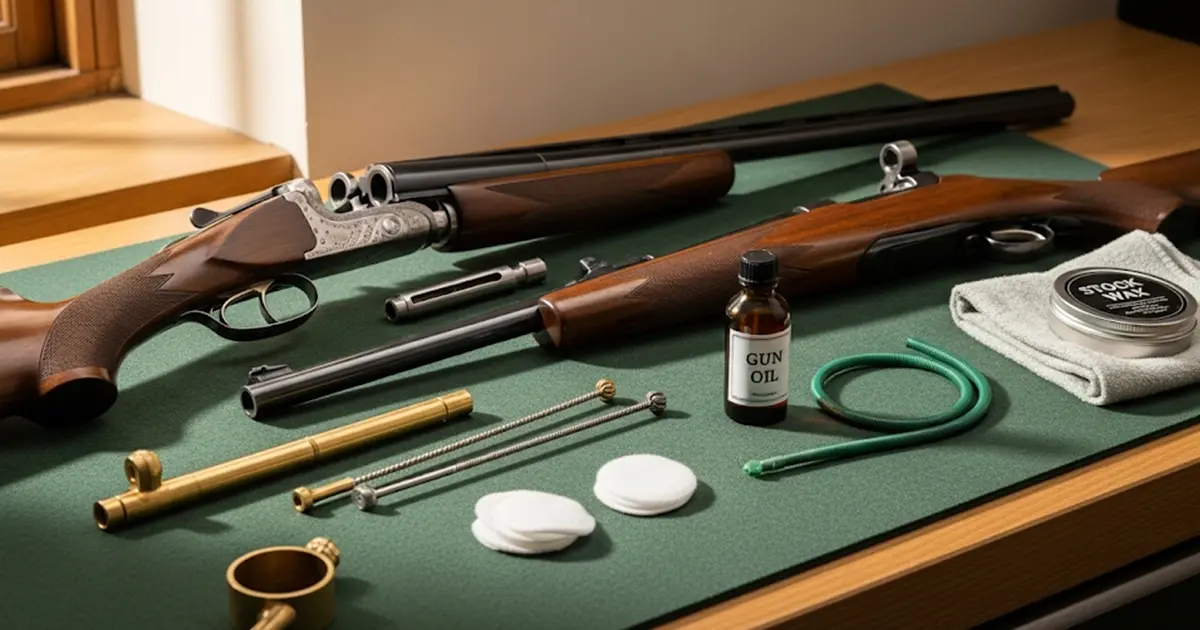Maintaining your rifle isn’t just about keeping it looking good, it’s about safety, accuracy, and longevity. A well-maintained firearm will perform more reliably, last longer, and help you avoid costly repairs or dangerous malfunctions. Yet, research shows many shooters, even seasoned and experienced ones, occasionally get the basics wrong.
This guide walks you through the correct cleaning process for bolt-action rifles, semi-automatics, and different calibres. We’ll cover the right tools, common mistakes to avoid, and expert tips from the Instinctive Shooter workshop, to keep your rifle in top condition.
Why Proper Rifle Cleaning Matters
Every time you fire a round, carbon, copper, and lead residues build up inside the barrel. Left untreated, this fouling can:
- Affect accuracy by altering bullet trajectory
- Increase wear on the barrel and moving parts
- Cause corrosion, particularly if moisture is present
- Lead to dangerous pressure spikes in extreme cases
David Bellamy, Managing Director of The Instinctive Shooter, says:
“A clean rifle is a safe rifle. We’ve seen rifles come in that are so fouled they can’t cycle properly – it’s a completely avoidable problem. Cleaning after each outing, or at least at the end of the day’s shooting, is the best insurance you can give your firearm.”
Tools and Products You’ll Need
Before you start, gather the essentials. The right tools make cleaning faster, safer, and more effective.
Basic rifle cleaning kit should include:
- Cleaning rod (with appropriate calibre-specific attachments)
- Bore guide (to protect the chamber and bore from damage)
- Phosphor-bronze brush and nylon brush
- Cleaning patches and jag
- Solvent for powder and copper fouling
- Gun oil or CLP (Clean, Lubricate, Protect)
- Lint-free cloths or microfibre towels
- Chamber brush (especially for semi-autos)
- Cleaning mat (to protect your work surface)
At TIS Guns, we stock both complete cleaning kits and individual tools from trusted brands, so you can match your setup to your rifle type and budget.
Step-by-Step Cleaning Process
1. Safety First
- Remove the magazine and ensure the rifle is completely unloaded.
- Check the chamber visually and physically.
- Keep ammunition well away from the cleaning area.
2. Disassemble Where Necessary
- For bolt-action rifles, remove the bolt.
- For semi-automatics, follow the manufacturer’s field-stripping instructions.
- Keep parts organised to avoid misplacing springs or pins.
3. Clean the Bore
- Insert a bore guide to protect the rifle’s chamber.
- Run a solvent-soaked patch through from breech to muzzle (never the other way round).
- Pass a phosphor-bronze brush through 6–8 times to loosen fouling.
- Follow with dry patches until they come out clean.
- For stubborn copper fouling, use a dedicated copper solvent and allow it to work as per instructions.
4. Clean the Action
- Use a nylon brush to remove carbon from the bolt face, locking lugs, and feed ramps.
- Apply solvent where needed, then wipe clean with a lint-free cloth.
5. Lubricate Moving Parts
- Apply a thin coat of gun oil to the bolt, rails, and other moving parts.
- Avoid over-lubricating, as excess oil can attract dirt and debris.
6. Wipe Down the Exterior
- Lightly oil a cloth and wipe all metal surfaces to protect against rust.
- For wooden stocks, use an appropriate stock wax or oil – not gun solvent.
7. Reassemble and Function Check
- Reassemble the rifle according to the manufacturer’s instructions.
- Perform a function check to ensure smooth cycling.
Common Cleaning Mistakes to Avoid
- Cleaning from the muzzle – risks damaging the crown and accuracy.
- Overuse of strong solvents – can damage finishes and stock materials.
- Skipping the bore guide – accelerates wear on the throat and rifling.
- Over-oiling – attracts grit and fouling.
- Neglecting the chamber – a dirty chamber can cause feeding and extraction issues.
Cleaning Frequency – How Often is Enough?
- After each outing if shooting in wet or dusty conditions.
- Every 50–100 rounds for regular target or stalking use.
- Before long-term storage, even if the rifle hasn’t been fired.
Expert Tip for Semi-Automatic Rifles
Semi-automatics require special attention to the gas system and chamber area. Carbon can build up quickly, leading to cycling issues. Always use a chamber brush and clean the gas system as per the manufacturer’s recommendations. TIS Guns offers servicing for semi-automatic rifles if you prefer professional maintenance.
Recommended Cleaning Kits and Services
At The Instinctive Shooter, we stock:
- Calibre-specific cleaning kits
- Bore snakes for quick field cleaning
- Premium solvents and oils
- Replacement brushes and patches
We also provide professional rifle cleaning and maintenance in our workshop, ideal for deep cleaning or preparing your rifle for the new season.
A few closing thoughts
Rifle cleaning isn’t a chore, it’s an investment in safety, accuracy, and the lifespan of your firearm. Whether you’re shooting targets, stalking deer, or preparing for driven game, the principles remain the same: clean carefully, use the right tools, and never cut corners.
Straight-Shooting Answers – Your Rifle Cleaning FAQs
How Often Should I Clean My Rifle If I Only Shoot a Few Times a Year?
Even if you only shoot occasionally, you should still clean your rifle after each use and again before long-term storage. This prevents corrosion from fingerprints, moisture, and powder residue that can build up over time.
Can I Damage My Rifle by Cleaning It Too Much?
Over-cleaning isn’t usually a problem if you’re using the right tools and techniques. The real risk comes from using excessive force, harsh chemicals, or cleaning from the muzzle without a bore guide.
Do I Need a Different Cleaning Process for a Stainless-Steel Barrel?
The steps are largely the same, but stainless barrels are more resistant to corrosion. You should still clean them thoroughly, as fouling and residue can affect accuracy just as much as with blued steel barrels.
What’s the Quickest Way to Clean My Rifle in the Field?
A bore snake is ideal for a quick clean when you’re away from your workbench. It won’t replace a full cleaning, but it will remove loose fouling and help maintain performance until you can do a proper job at home.
Is It Okay to Use Household Oils Instead of Gun Oil?
It’s best to stick to oils designed for firearms. Household oils may not offer the same corrosion protection, can gum up over time, and might damage wood finishes or synthetic stocks.
Should I Clean My Rifle If It Hasn’t Been Fired?
Yes – dust, humidity, and temperature changes can still cause corrosion in an unused rifle. A light wipe-down and oiling will help protect it, especially if stored for long periods.
What’s the Difference Between Powder Fouling and Copper Fouling?
Powder fouling is the carbon residue from burnt powder, while copper fouling comes from bullet jackets depositing in the rifling. Different solvents are designed to tackle each type, and both should be removed for peak accuracy.




